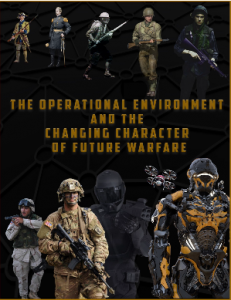[Editor’s Note: Mad Scientist Laboratory is pleased to publish our latest “Tenth Man” post. This Devil’s Advocate or contrarian approach serves as a form of alternative analysis and is a check against group think and  mirror imaging. The Mad … Read the rest
mirror imaging. The Mad … Read the rest
175. “I Know the Sound it Makes When It Lies” AI-Powered Tech to Improve Engagement in the Human Domain
[Editor’s Note: Mad Scientist Laboratory is pleased to publish today’s post by guest bloggers LTC Arnel P. David, LTC (Ret) Patrick James Christian, PhD, and Dr. Aleksandra Nesic, who use storytelling to illustrate how the convergence … Read the rest
138. “The Monolith”
[Editor’s Note: Mad Scientist Laboratory is pleased to introduce a new, quarterly feature, entitled “The Monolith.” Arthur C. Clarke and Stanley Kubrick fans alike will recognize and appreciate our allusion to the alien artifact responsible for “uplifting” mankind from … Read the rest
137. What’s in a Touch? Lessons from the Edge of Electronic Interface
[Editor’s Note: Mad Scientist Laboratory is pleased to present today’s guest blog post by Dr. Brian Holmes, exploring the threats associated with adaptive technologies and how nefarious actors can morph benign technological innovations into new, more sinister applications. … Read the rest
133. “Back (and Forward) to the Future IV” and What We Have and Haven’t Learned
[Editor’s Note: Returning guest blogger Frank Prautzsch peers 34 years into the past to explore how the blockbuster film “Back to the Future” and its sequels portrayed a number of fantastic technologies that have since evolved from pure science … Read the rest





